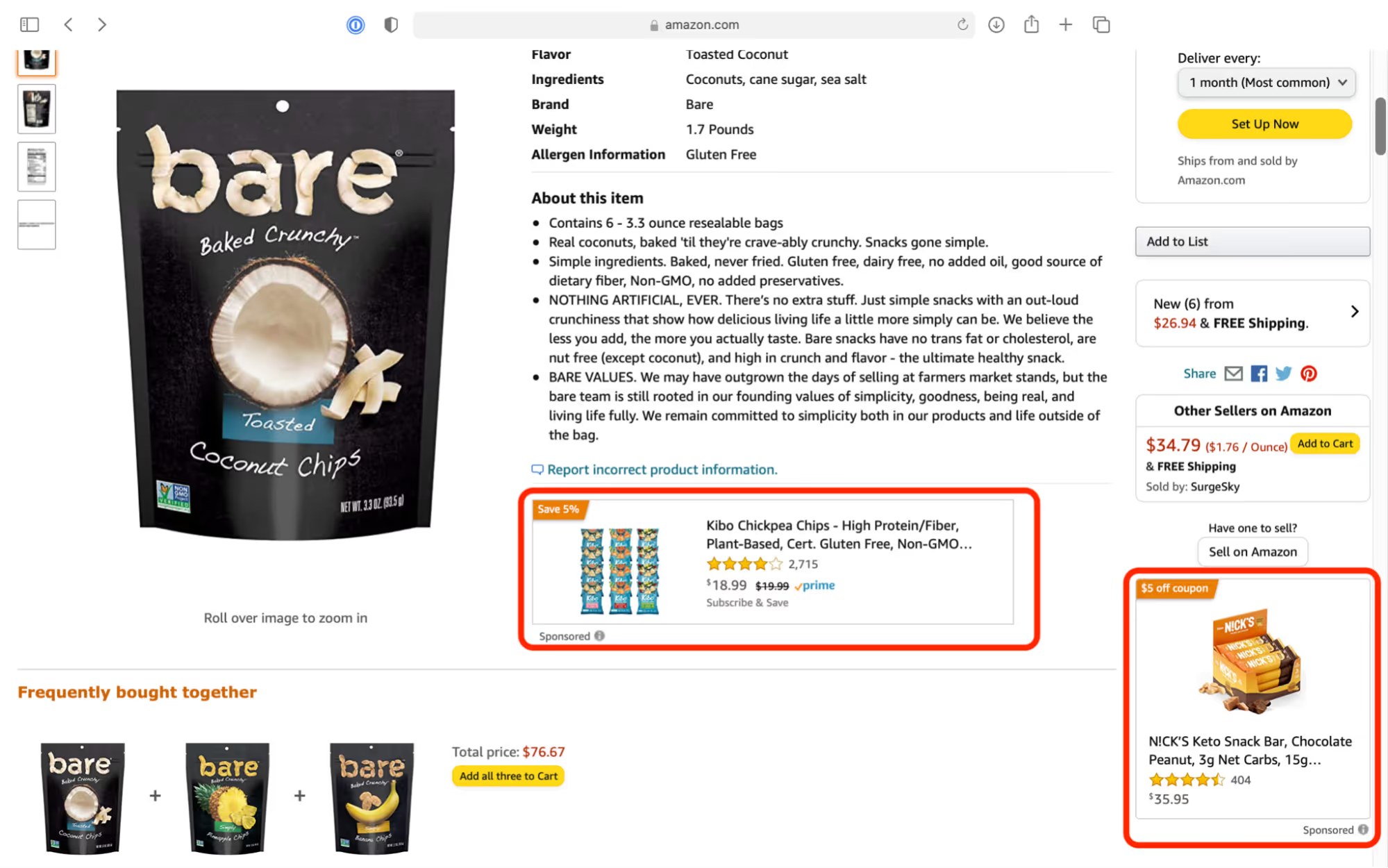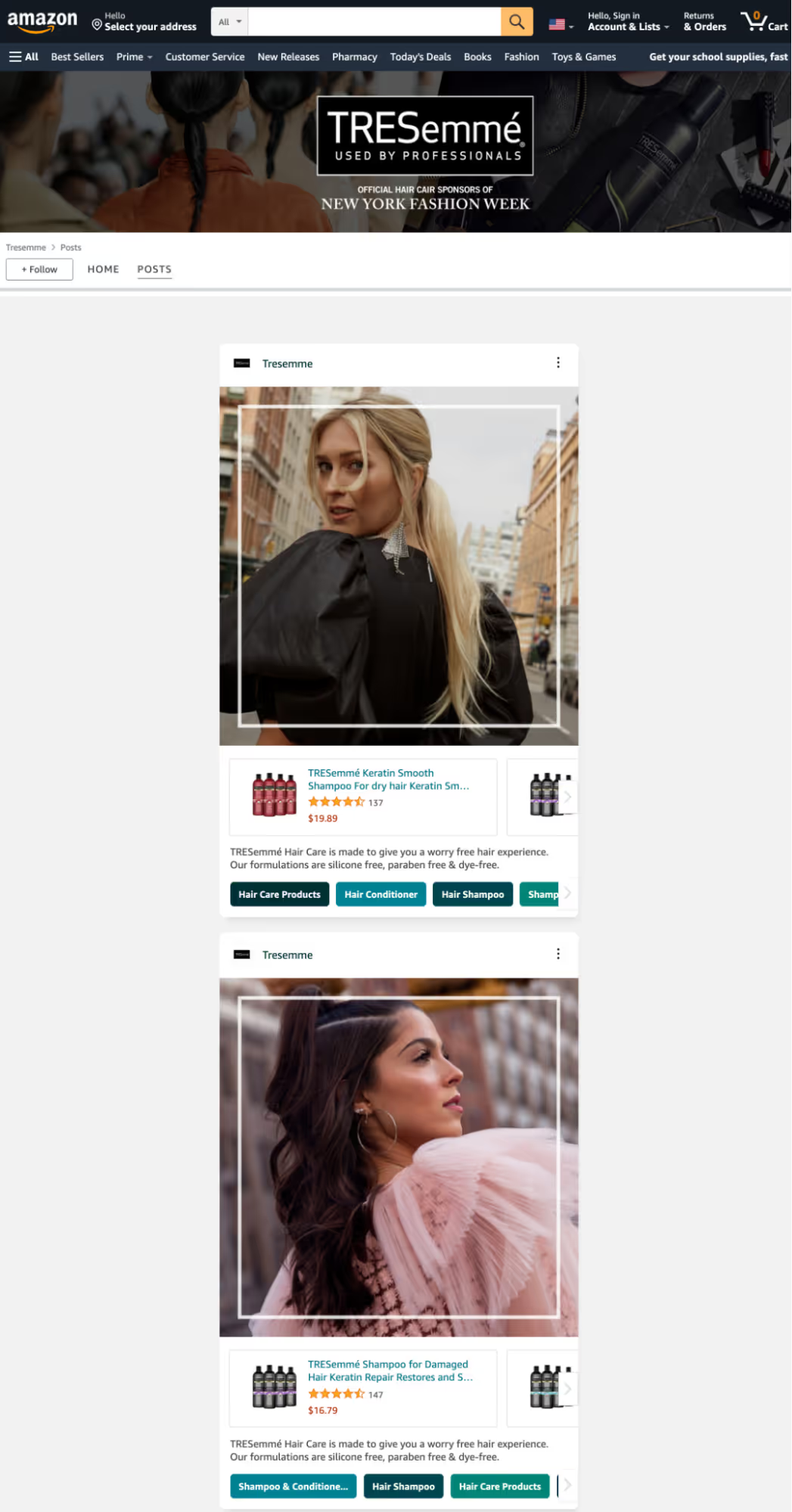
Conversation

🥳 Feedback Received!
Thanks for taking a moment to share your thoughts — it genuinely helps us make each chapter sharper.
What happens next:
- Your feedback goes straight to our product team.
- We’ll use it to refine lessons, clarify examples, and make the program even more useful.
Appreciate you helping make this program better for everyone.
Ready for your next challenge? 👇
More Amazon Tactics & Tools
The following aren’t necessary for you to kick-start Amazon as your primary channel, but they’re good to know about as you continue optimizing and growing.
Amazon Coupons
What it is: Single-use discounts on your sponsored products
Why you should know about it: Coupons can give a nice click-through and conversion boost to your ads.
Who should do it: Anyone with product margins that can afford a discount (plus a 60¢ fee every time a coupon is redeemed)

Shoppers love discounts. You can set dollar or percentage discounts on your sponsored products for a likely jump in clicks and conversions. It’s easy to set up coupons—which you can do either individually or in bulk—in your seller account > Advertising > Coupons.
Now that you have a firm grasp of ad optimization, you can branch out into coupon optimization, testing what types of discounts yield the best results on which products. You might find that coupons work best on your middle-of-the-pack performers but don’t help your bestsellers much, or the other way around.
One thing we do generally recommend: dollar instead of percentage discounts. Dollar amounts more explicitly show how much the shopper will save, no math needed. Even so, you may find in your testing that percentages work best for your product type.
Amazon Promotions
What it is: Lightning Deals, 7-Day Deals, promo codes
Why you should know about it: Promotions, like coupons, help with clicks and conversions.
Who should do it: Sellers who want an immediate boost to sales or reduction in inventory
In addition to coupons, Amazon offers promotions including:
- Lightning Deals: Your product is featured on the Amazon Deals page for a few hours (determined by Amazon).
- 7-Day Deals: Your product is featured on the Amazon Deals page for a week.
- Promo codes: Shoppers enter a discount code when purchasing a product. (Promo codes don’t help with clicks.)
- Social media promo codes: Not what it sounds like. You create a landing page for a specific promo code, where you can list one or multiple products. This lets you direct traffic to that page instead of your product page, so your product page conversion rate isn’t affected.
You can set up promotions in your seller account > Advertising > Promotions. It’s possible to have both a promotion and a coupon running on a given item, but of course, your margin will be affected (Amazon Deals page promos also have fees attached).
Amazon DSP
What it is: Amazon’s demand-side platform
Why you should know about it: You’ll probably come across it as you scale. Amazon might reach out to you about joining DSP.
Who should do it: Big spenders who want to be hands-off. If you work directly with Amazon, there’s a minimum spend of $35,000 to participate in DSP. Or you can work with an agency that has DSP access, but even then, the starting budget is usually over $20k.
Amazon DSP lets advertisers programmatically buy display, video, and audio ads at scale. It takes the manual work out of Amazon ad campaigning. That’s great for efficiency, but the flip side is that you relinquish control—not something we recommend for early-stage startups.
If you’re interested in working with Amazon PPC experts, we recommend the Ad Badger team. They helped us create this module, and they’re extremely good at what they do. (We don’t get an affiliate kickback or anything from saying that.)
Amazon Attribution
What it is: Tool to drive off-site traffic to Amazon
Why you should know about it: Can be used to bring prospects to your Amazon product pages
Who should do it: Sellers in Amazon Brand Registry who want to expand the scope of their Amazon ads to different marketing channels
Amazon Attribution lets you connect your Amazon account with off-Amazon marketing channels such as email, social media ads, and search ads, to see how off-site activity affects shopping and buying behaviors. Metrics like clicks and conversions will show you how other channels are influencing sales. Once you’ve optimized the techniques we discussed earlier, exploring Amazon Attribution is a worthwhile next step.
Amazon Posts
What it is: Basically Instagram, but on Amazon
Why you should know about it: Could become an important way to share branded content
Who should consider doing it: Lifestyle brands
Posts are better shown than described:

They’re social media–like posts on Amazon, complete with graphics and captions. When a user clicks on one, they’re taken to a product page. Posts can appear in a unique “feed” for your brand, on product detail pages, and in product- or category-based feeds. Like organic social media, they might become an advantageous tool for lifestyle brands aiming to build brand awareness and highlight brand personality.
This unit was co-created with Ad Badger. If you’d prefer to have professionals execute your Amazon ads strategy, we recommend working with them.


